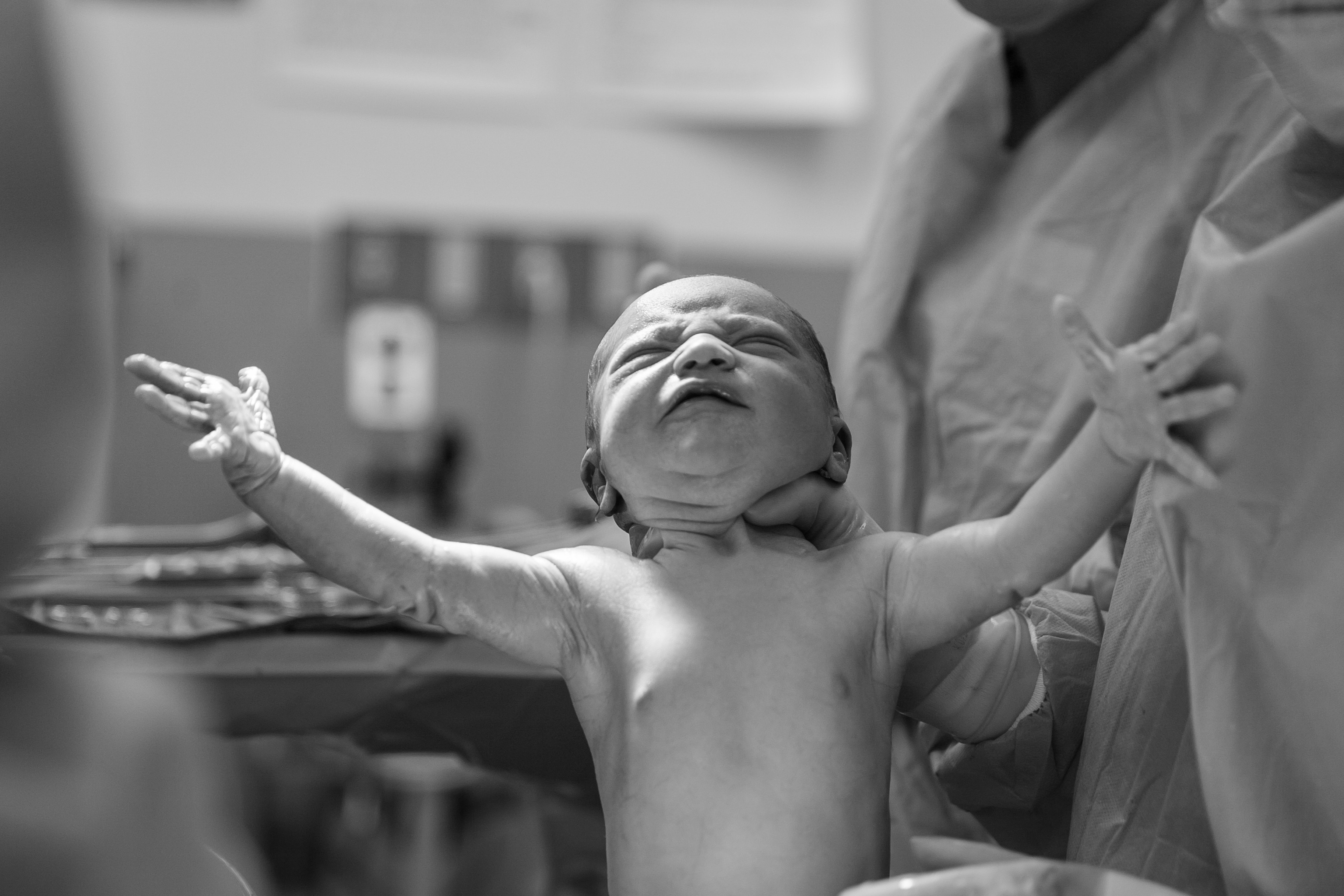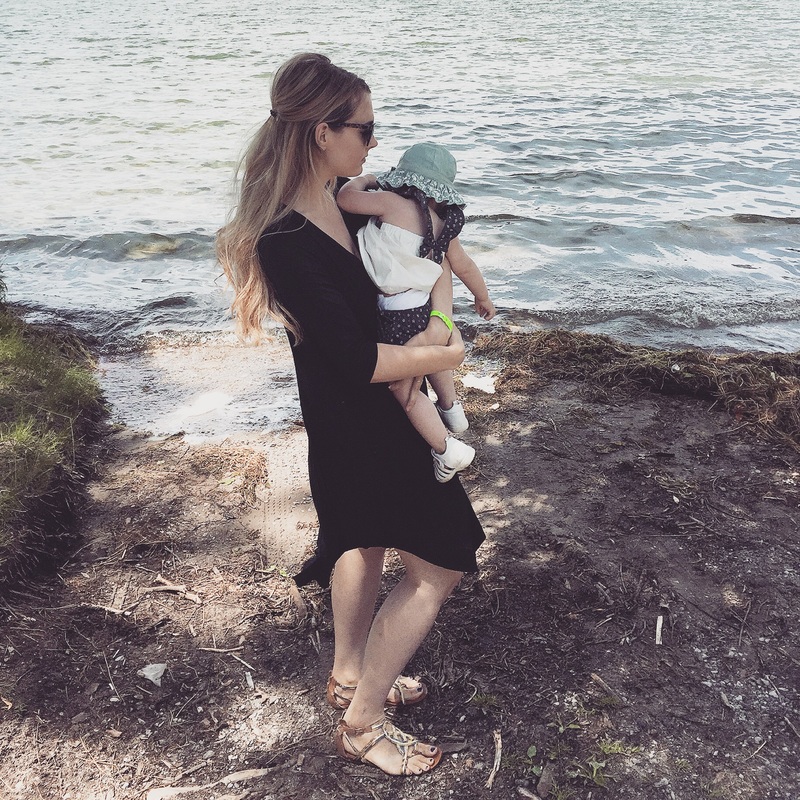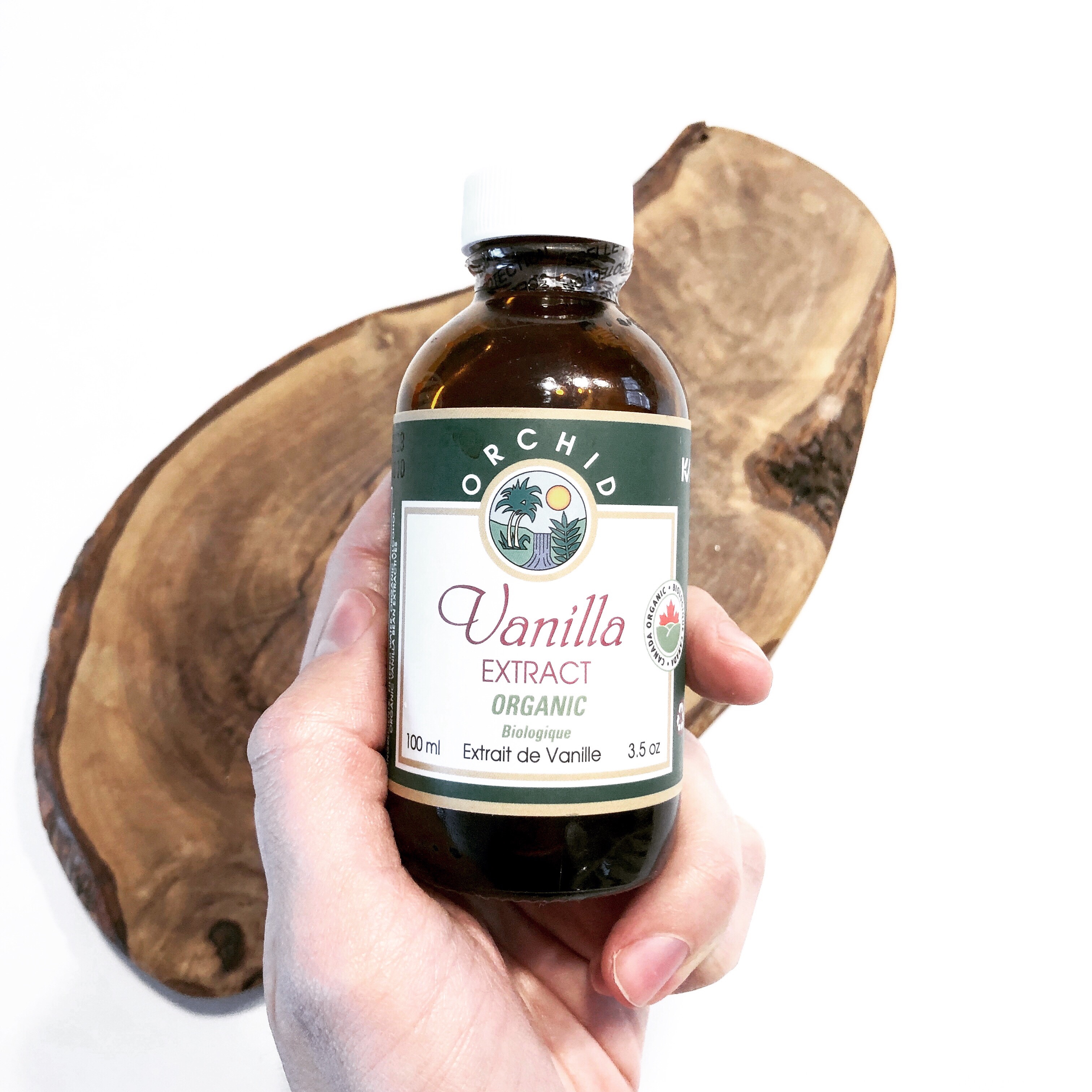Labour and Delivery, as well as Postnatal care, is very raw, intimate, and personal. There are many options when it comes to the nitty gritty of child bearing and I took it upon myself to really research my options before having my Children. I am sharing some details of my birth plan, as well as my post natal plan, with some research to back my own personal choices. It is VERY important that you research for yourself and make your own informed choices with your own health care provider. These are decisions I made under the care of my own Midwives and they were made based on the level of health experienced by myself and my babies in utero. Always consult with your health care provider when making health decisions for you and your family. This post is intended to showcase the many options available to Women during this time of life and to empower you to look into them for yourself.
My choices were based on a holistic view of health care and were chosen after very careful research. Everyone’s bodies and circumstances are different. I also write this from the perspective of living in Canada according to the medical options and processes available to us here. Some of these options may not apply to everyone and their area, or may require private funding, etc.
Childbearing and Motherhood in general come with so many different options and discussing these options can sometimes feel polarizing. It is important that we do so without judgement towards each other. This post is simply an account of my own choices and research but in no way reflects my opinion of others’ choices or circumstances. Your body, your birth, and your choices for your children are YOURS and yours alone. I wrote this to provide a starting place for research and bring awareness to a variety of options, and did so under a holistic lens. This blog is written intentionally for those who choose to adopt a more holistic approach to Birth. My options are not everyone’s options and my hope is that this post comes off as respectful and to be used as a tool to further your own research. After having two children naturally, here is my Birth and Postpartum plan.
* Disclaimer: This post is not intended as medical advice. Please continue to seek advice from/and make decisions with your primary health care provider. *
Labour + Delivery Plan
Homebirth with Midwives present
- In Canada, Midwives are regulated under our health care and are considered experts in their field of pregnancy, delivery and postnatal care. They remain with you until 6 weeks postpartum to monitor baby and mother medically as well as support breastfeeding. The biggest question I am asked is how much I paid for midwife care but because it is a regulated health care option in Canada, it is covered through our healthcare (ie. OHIP covers midwives in Ontario, etc.). This is not the case in the United States where you’ll need to pay for their services, but from what I understand you also pay for in hospital services/births so it is your discretion where you prefer to spend the money to have your baby. Their care is non-judgemental, pro informed consent, gentle, non intimidating, and incredibly professional. I only ever had midwives and this is truly the ONLY way I would receive maternal health care. The time and care that you receive is unlike other maternal health care available. The appointments are lengthy and allow for you to address any concerns or ask questions during pregnancy. This also gives you time to fully understand any medical decisions that are presented to you and benefit from true informed consent. I personally felt very well taken care of. Midwives in Canada go to University for 4-5 years to solely study pregnancy, delivery, postnatal care and so on. They then complete an extensive and lengthy placement under the observation of trained Midwives to receive their full creditation. They have more logged hours of training and education (speaking in terms of Canada) than any other health care provider in this area of care.
- I chose Home birthing with both of my children for a variety of reasons:
- Rates of infection in a hospital setting are a risk and relatively high. The hospital is where people go when they get sick which means all of these infections are housed under this roof. While maternal wings are separated from the rest of the hospital, it is obviously still very possible that people can spread various illnesses or infection through the hospitals to Mother and Baby. In a study (Ott E., et al. 2013), that looked at the prevalence of nosocomial infection (hospital acquired infection), 11.2% of patients in the study had a total of 125 nosocomial infections. That is 11.2 people out of every 100 within the hospital walls picked up an infection during their stay. At home, you limit your chances of infection to whom you allow in your house. A general rule for most parents is that visitors stay far away from the home of newborns when ill but this is not a guideline that is always possible in a hospital setting. There is a higher risk of exposure to illness.
- Development of baby’s microbiome (one of the most important aspects of a developing immune system) at home is significantly diverse compared to babies born in Hospital. According to a study (Combellick, J.L., 2018), “Hospitalization was associated with alterations in the neonatal microbiota structure during the first month (Unweighted PERMANOVA p< 0.001, R2= 0.021; Fig. 1A), but the differences were greatest at day 2 of life.” It was also noted that, “The maternal fecal microbiota differed significantly between those delivering at home or in the hospital without antibiotic exposure”
- Studies have shown that (Janssen, P.A., et. Al, 2009) planned home births in low risk pregnancies are just as safe or SAFER than hospital births. “The rate of perinatal death per 1000 births was 0.35 (95% confidence interval [CI] 0.00–1.03) in the group of planned home births; the rate in the group of planned hospital births was 0.57 (95% CI 0.00–1.43)” “Planned home birth attended by a registered midwife was associated with very low and comparable rates of perinatal death and reduced rates of obstetric interventions and other adverse perinatal outcomes compared with planned hospital birth attended by a midwife or physician.”
- Less Medical Intervention does not increase risk of adverse events. Medical intervention can be necessary, however, when used for convenience which is often the case in hospital birthing, it can lead to compounding interventions. According to a study done by Cheyney, M., Et. Al, (2014), women experience far less intervention at home than their hospital counterparts with no increase risk. “Low‐risk women in this cohort experienced high rates of physiologic birth and low rates of intervention without an increase in adverse outcomes.”
- Home Births are associated with less Medical Interventions vs. hospital Births. This study by (Janssen, P.A., et. Al, 2009), suggests that “Women in the planned home-birth group were significantly less likely than those who planned a midwife-attended hospital birth to have obstetric interventions”
- Other options available to research/consider: Midwives in Hospital, OB in Hospital, Midwives in Birthing Centre, etc.
Waterbirth
- Additionally, I chose to have a waterbirth which means that I laboured in a standard homebirthing tub and delivered baby underwater. Babies do not breath in the water as they only get the reflex to breathe once they first hit air. I chose a waterbirth because I personally am comforted by water. I also found that being in a tub gave me personal space from others while birthing which is an incredibly heightening and at times scary position to be in. Having my own space gave me a sense of security and safety.
- I purchased my own birthing tub but you can also rent them from local doulas. I chose the Passages Midwifery Birth Tub from https://www.midwiferysupplies.ca/collections/personal-use-birth-pools/products/passages-midwifery-birth-pool?variant=642044129
- The above mentioned birthing tub was the right cost versus other options ($99 CAD) and was just the right size for me. Some women may prefer a bigger tub but I didn’t feel the need to move around much in the tub.
- Other options available to research/consider: Air birth at home, Air birth at hospital, Labouring in Water at hospital (delivering at hospital is not allowed where I live), Water birth or Air birth in Birthing Centre, etc.
No Internal Dilation Checks (unless medically necessary)
- This is something I felt very strongly about the second time around as this type of checking caused incredible pain and panic during the labour of my first. I personally experience very intense labour and delivery. Dilation checks personally caused me incredible pain. They also are done while the Mother lays on her back which was NOT a labouring position that I was comfortable in. I tend to labour standing up and naturally deliver on my knees rather than on my back. I found being on my back unbearable which added to the intensity of my labour and created a sense of panic and lack of focus when needed the most. After discussing this with my Midwives the second time around, they were happy to avoid internal checks during labour unless medically necessary which I agreed with. I trusted my Midwives and felt that I could put this decision into their hands completely. I did not have any internal checks with my second labour and delivery as it wasn’t medically necessary at any point during my labour.
Labouring in whatever position I felt most comfortable in + ability to move during labour
- This was a huge factor for me. Considering I opted out of any and all pain medication during both of my deliveries, I found it incredibly helpful to CHOOSE which positions felt best for me. The added bonus of opting out of an Epidural (though a painful choice) was that I had the freedom to move however I wanted. As I stated above, I felt most comfortable upright during the majority of my labour and delivery in both pregnancies. With my first, the comfort position I was in during the last stage of delivery made it difficult for my Midwives to check the babies heart rate with a doppler, and so, I DID have to deliver her sitting down. With my second, I delivered on my knees with gravity as a friend and found this to be much more efficient as well as comfortable when it came to the end where baby moves down the birth canal (which is the most intense part of delivery).
No interventions unless medically necessary
- I opted for Full informed consent and for any and all procedures to be discussed with myself and my husband prior to them being executed. With Midwives, I found this to be a common practice in my experience as they ALWAYS provided me with full informed consent. This is something I highly suggest for any birth plans as many Women have experienced lack of consent which lead to the experience of postpartum trauma, anxiety and depression. Interventions during labour and delivery can be incredibly intense and although they are sometimes medically necessary, there is always the need for choice when it comes to a procedure that involves risk.
No pain medication or epidural
- This was a choice I made and was solidified by the fact that I also decided on home birthing. There is no pain management available during home birth and if you decide you want pain medication it would require a transfer to hospital with your Midwives. I opted out of any and all pain management after researching the side effects of these options for myself and baby. After weighing the risks, I personally felt that I did not want to assume any risk and opted for a natural birth. This was not an easy decision and it didn’t always make for the most pleasant delivery. At times I wondered if I wanted the calm experience that comes with an epidural. In retrospect, I feel I made the best choice for myself. But, this is a deeply personal choice and understandably so. One thing that came from having two natural births was that I knew that my body was capable of delivering babies on its own. The pain did pass following delivery and my recovery was fairly straight forward.
- Other options available to research/consider: Epidural, Pain mediction in hospital, Gas and Air Therapy, TENS machines, Hypnobirthing, etc.
Only my Husband present at the Birth
- I personally felt most comfortable by limiting the number of people in the room with me during labour and delivery. My plan was to allow for my Husband, primary midwife as well as a secondary mdiwife to be present at my birth. All Homebirths planned with midwives generally require two or more midwives but since my deliveries were fast and intense, only one midwife made it to each of my births. Secondary midwives did show up following delivery to assist with Baby and Mother.
No IV’s or unnecessary medical equipment attached to Mother during labour and delivery
- My intention was to be able to move freely and get into whichever position necessary to keep myself comfortable. Midwives choose to use fetal dopplers to check on babies heart rate so you are not connected to a bunch of wires and machines. Babies also experience fluctuations in heart rate during labour and delivery (which makes sense) and constant monitoring may cause health professionals to assume risk when there really is none and baby is simply experiencing these natural changes. Dopplers allow for monitoring to happen every 30 minutes or as needed while labour progresses.
Delayed cord clamping
- This means that you allow the umbilical cord to remain attached to both Baby and Mother until it has stopped pulsating. By doing this, you allow for the blood and fetal cells from the cord to be passed back to Baby following birth. It is known that Baby is born with 1/3 less blood than they need and it remains in the placenta and cord. Nature intends for this to be redirected back to Baby following delivery, although it has become common for professionals to cut the cord too early for this to occur in present day obstetrics. If you delay clamping, the blood is delivered back to Baby and they are provided with this in ADDITION to healing stem cells found within cord blood. This practice has been shown to improve the health of baby and increase stem cells within the body which in turn aids with prevention and management of potential disease or illness down the road. This is a decision that is presented to Parents by Midwives often and I was interested to see the benefits of delayed cord clamping after doing my own research. By choosing this option over cord blood banking, you are providing Baby with the blood and stem cells upfront which boost their health tremendously. Another reason I chose this over cord blood banking is that I was shocked to learn that banking your cord blood does not mean you receive your OWN cord blood if you need to use it in the future. It also costs quie a bit of money a month to bank cord blood and there is no guarantee that if a black out were to occur that the blood would remain fully protected. After going over these factors as well as more research, it made sense for us to delay cord clamping and allow baby to receive the blood and stem cells they required immediately.
- In my research I came across an associated risk with delayed clamping. There lies a small risk of micro-transfusions of Mothers blood IF the Placenta has become partially detached IF the mother is HIV positive. This is a very specific situation and would typically be known prior to delivery, but something to consider and discuss with your health care provider should this apply to your situation.
Natural Delivery of the Placenta
- Mothers are routinely given an injection of oxytocin following delivery to speed up the delivery of the placenta after baby and to reduce the risk of postnatal hemorrhage. I opted to saying NO to oxytocin shots after delivery as I wanted my placenta to deliver naturally. I advised my Midwives to only use the shot if they began to see markers for postnatal hemorrhage. I also opted for no tugging or physical aid in delivering the placenta unless it remained in for longer than what is recommended medically. With my first, it was delivered fairly soon after delivery (approximately 30 minutes) without assistance. With my second, I did require some slight assistance in the form of very slight pulling by the midwives to deliver the placenta as it hadn’t naturally delivered itself after an hour. This may have lead to potential infection so I opted for gentle assistance. I avoided oxytocin shots in each delivery which delivers synthetic hormones into the body to aid in birth of the placenta and potential maternal hemorrhaging.
Postnatal Care Plan
Immediate skin to skin with Mother (if Mother not able to for medical reasons, skin to skin with Father)
There have been many documented benefits concerning skin to skin care or “Kangaroo Care”. This practice involves baby naked on Mother’s (Or Father’s) bare chest. Beyond obvious bonding that occurs during skin to skin, there are many medical benefits that occur when this is practiced for both Mother and Baby. The hormones released during skin to skin benefit Mothers by reducing stress levels as well as facilitating quicker healing post delivery. For Baby, these hormones regulate their heart rate, breathing patterns, temperature, blood sugar, cortisol levels,etc. All of these processes are integral to healthy development and immune system growth for Newborns. In addition to these health benefits, this practice also helps with milk production and initiating breastfeeding. For this reason, it is most beneficial when skin to skin is between a Mother and Baby, but if Mother is not available then the next best option is to provide Skin to Skin via the Father.
Skin to skin is incredibly beneficial when Baby is just born but it is ALSO beneficial as baby grows older and develops. When my Babies have been sick during the first year, I have practiced skin to skin to help them heal quickly. This practice also helps regulate body temperature which can be helpful when young babies have a fever.
Baby remains with Mother and Father at all times after birth
Considering I had a Homebirth, this was assumed as there isnt many places to take a baby away. However, I had this in my plan incase I required a transfer to hospital. This was a choice I made for a variety of reasons:
-promote bonding between Baby and Parents
-Encourage Healthy milk production and breastfeeding initiation, a first time Mom is able to learn what baby’s hunger cues look like when they remain with her.
-Comfort level of Parents that baby is near and no harm can come to them
-Reduce transferring baby around to different rooms where infection could occur
-Reducing the opportunity for Health care workers to perform medical interventions not authorized by Parents who are not present.
No eye ointment for Baby
Eye ointment (an antibiotic) has been given to Newborns to avoid pink eye and in worst cases blindness or damage to the eyes. This occurs when Mothers carry Sexually Transmitted Diseases (STD) and they are passed to Baby in the birth canal during delivery. This practice was Mandatory until recently when professionals agreed that it may have more risks than benefits.
Aside from giving antibiotics to a newborn which can disrupt gut health in a newborn baby, there could be eye irritation from treatment as well as the risk of the treatment not working. There have also been studies (Farroni, T., Et. al, 2002), that looked at the issue of these medications causing temporary blurred vision at a crucial milestone in Baby’s development. This milestone involves baby being able to make clear eye contact with their Mother to induce Maternal bonding.
The Canadian Pediatric Society have recently changed their stance (Moore, D.L., et Al. CPS, 2015) in giving newborns eye ointment at birth and have suggested screening Mother prior to labour for STI presence via bloodwork. This would determine if newborn baby would receive the antibiotic with a positive bloodwork result from the Mother, or if they could avoid it with a negative result. Bloodwork for STI screening is done once in the beginning of pregnancy and once in the third trimester to confirm that no STI’s are present before birth.
I opted out of eye ointment for both births, and went ahead with bloodwork screening to ensure STI’s came back negative prior to giving birth. Unfortunately, it was given to my first without me noticing as it wasn’t well documented in my charts and was common practice at the time. I suggest doing research on risks and benefits of this procedure yourself before deciding on giving this ointment to your Newborn.
Mother to Soak in Bath tub following birth rather than Shower
I experienced very fast labours and had shaky legs for hours following each of my births. Standing in a shower would have been difficult and quite frankly dangerous if I were to have fallen. I also wanted to soak and relax for a while after all the physical trauma to my body.
Follow baby cues to initiate breastfeeding (chest crawl, rooting, fussing, fist chewing)
I wanted to have Baby near me so I could see when they wanted to naturally initiate breastfeeding. Baby hunger cues can look like rooting, fussing, fist chewing, and even chest crawling (seriously, google videos of the newborn chest crawl.. they are amazingly smart little creatures). I was able to breastfeed both my babies without major complications and I attribute that to the extensive care my midwives provided me following delivery for 6 weeks. I did experience thrush with my first as well as mastitis twice with my second and had it not been for my midwives, I may have not known what to do or if certain aspects of feeding were “normal” or needed adjustment. I am forever grateful to these amazing Women for the support they provided me and in turn made me incredibly confident in my ability to breastfeed both babies.
Other options available to research/consider: if you don’t seek midwifery care (or require more support than what your midwives have given you/after 6 weeks postpartum) is to find a lactation consultant or a La Leche League to help support your breastfeeding journey.
Exclusive Breastfeeding: No formula or supplementation to Baby
I personally felt very strongly about exclusive breastfeeding and wanted to ensure my milk supply was adequate. When supplementing with formula (particularly during the early stages of milk production) it reduces supply as you miss feeds. I did not want any supplementation as I wanted to ensure milk supply was adequate and was being produced based on Baby’s needs (Breastmilk establishes via supply and demand from Babies feeds).
No immediate testing following birth on baby unless medically necessary (allow for bonding time with parents)
I wanted to have bonding time with my babies and avoided any unnecessary medical intervention. I of course would have allowed necessary emergency procedures should they have occurred. Luckily, both my babies did not require any major interventions so I was able to maintain this plan.
Delay Baby’s First Bath
With both of my Children I chose not to bathe them for 5-7 days post delivery. This is an odd concept to many as they believe that the baby is “dirty” from labour and delivery but the white coating (or vernix) that Baby is covered in is a protective layer over their skin. It has an important role as a barrier for their skin as well as a protector for their immune system in those first few days/week. Vernix is a white substance that covers newborns and is comprised of the skin cells they created in early development within the womb. It also holds important proteins which protect against bacterial viruses. Delaying your Baby’s first bath also helps them maintain their natural skin oils and doesn’t strip the skin barrier which can cause drying or cracking of the skin. If you delay bathing, you set up Baby to have skin that regulates its own oil production thus needing less moisturizers or oils in the first part of life. Neither of my Babies required a great deal of lotions or oils on their skin and I attribute this to allowing them to develop skin moisture levels while staying coated in Vernix.
No circumcision (applies to Male babies only)
After doing a lot of research, I decided not to circumcise. The rates of circumcision are much lower today as Health care in Canada has deemed it an unnecessary and elective procedure. Due to this fact, health care no longer funds this procedure which means you have to hire a doctor yourself to perform one and pay them out of pocket.
The biggest argument for circumcision is that of cleanliness but this has been disproven in many studies even from many decades ago. According to Hovsepian D. (1951), “The origin of the practice of circumcision is an ancient one having a ritual significance in most cases, but the operation is done primarily for hygienic purposes amongst English-speaking people. Critical evaluation of the indication for circumcision suggests that the hygienic principles are probably overrated. If it were understood that the anatomy of the prepuce and glans has a morphological development which in most cases removes the possibility of phimosis after the third year, less emphasis would be placed on the necessity for the procedure.”
In an updated statement published in Ottawa in 2015, “The Canadian Paediatric Society (CPS) continues to recommend against the routine circumcision of newborn males.”
Since being deemed not medically necessary in Canada, “Convention and conformity demand the continuation of the procedure in many areas. The decision to circumcise remains a matter of individual preference as prescribed in the doctor-patient relationship” (Hovsepian, D. 1951).
It is also important to note that there have been some studies (Sayer, J., 2016) to suggest that this procedure (which is done without any pain management ie. anesthetic of any kind) has created pain induced trauma which has become evident on fMRI scans.
This post had highlighted some of the most basic areas of birth and post natal care and planning. As discussed above, please do your own research when looking into birthing and postpartum options for yourself and your baby. Discuss all options with your primary care provider.
References:
- Ott, E., Saathoff, S., Graf, K., Schwab, F., & Chaberny, I. F. (2013). The Prevalence of Nosocomial and Community Acquired Infections in a University Hospital. Deutsches Aerzteblatt Online, 110(31-32), 533–540. doi: 10.3238/arztebl.2013.0533
- Combellick, J.L., Shin, H., Shin, D. et al.Differences in the fecal microbiota of neonates born at home or in the hospital. Sci Rep 8, 15660 (2018) doi:10.1038/s41598-018-33995-7
- Janssen, P. A., Saxell, L., Page, L. A., Klein, M. C., Liston, R. M., & Lee, S. K. (2009). Outcomes of planned home birth with registered midwife versus planned hospital birth with midwife or physician. Canadian Medical Association Journal, 181(6-7), 377–383. doi: 10.1503/cmaj.081869
- Cheyney, M., Bovbjerg, M., Everson, C., Gordon, W., Hannibal, D., & Vedam, S. (2014). Outcomes of Care for 16,924 Planned Home Births in the United States: The Midwives Alliance of North America Statistics Project, 2004 to 2009. Journal of Midwifery & Womens Health, 59(1), 17–27. doi: 10.1111/jmwh.12172
- Farroni, T., Csibra, G., Simion, F., & Johnson, M. H. (2002). Eye contact detection in humans from birth. Proceedings of the National Academy of Sciences of the United States of America, 99(14), 9602–9605.
- Canadian Pediatric Society (2015). DL Mooore, NE MacDonald; Infectious Diseases and Immunization Committee. Preventing ophthalmia neonatorum. Paediatr Child Health;20(2):93-96.
- Hovsepian, D. (1951). The pros and cons of routine circumcision. Calif Med. 75(5):359-61. Retrieved from: Green Med Info: https://www.greenmedinfo.com/article/there-are-pros-and-cons-routine-circumcision
- Canadian Paediatric Society (September 8, 2015). Canadian paediatricians revisit newborn male circumcision recommendations. Retrieved from: https://www.cps.ca/en/media/canadian-paediatricians-revisit-newborn-male-circumcision-recommendations
- Infants Deeply Traumatized By Common Medical Procedures, New Study Suggests (Sayer J., July 30 2016) GreenMedInfo LLC. Retrieved from: https://www.greenmedinfo.com/blog/infants-deeply-traumatized-medical-procedures-new-study-suggests-1. This work is reproduced and distributed with the permission of GreenMedInfo LLC. Want to learn more from GreenMedInfo? Sign up for the newsletter here //www.greenmedinfo.com/greenmed/newsletter.





No Comments